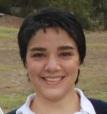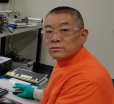
Applications - Bilby
Applications, Recent results and Publications

Showing 21 - 40 of 55 results

Applications, Recent results and Publications

ANSTO is responsible for the Little Forest Legacy Site (LFLS) located within the ANSTO Buffer Zone boundary. This site, formerly known as the Little Forest Burial Ground (LFBG), was used by the Australian Atomic Energy Commission (AAEC) during the 1960’s to dispose of waste containing low levels of radioactivity and beryllium oxide (non-radioactive) in a series of shallow trenches. There has been regular monitoring of the site since 1966 and the results have been reported in ANSTO’s environmental monitoring reports.



Sample environments, Data Analysis, Mail-In Services


ANSTO is proud to host the Shorebirds Competition for the fourth year. This unique environmental poster competition is free to enter and offers over $4000 in prizes (insert link to prizes button) for students and schools!
Exploring the interaction of polystyrene nanoplastics and blood plasma proteins.
Chinese researchers have eveloped a novel strategy for the scalable production of high-performance, thin, and free-standing lithium anodes for lithium-ion batteries with enhanced cycling stability and electrochemical properties.
ANSTO is proud to host the Shorebirds Competition for the fifth year. This unique environmental poster competition is free to enter and offers over $4500 in prizes for students and schools!
Snapshots of an unprecedented double element-hydrogen bond activation at a transition metal centre.
Evidence for existence of a highly exotic and elusive state of matter, known as a magnetic ‘spin nematic’ phase in a natural mineral called linarite.
Tool developed for producing F-18 radiopharmaceuticals for PET imaging.
This week palaeontologists from Curtin University announced that a specimen from the collection of the Australian Age of Dinosaurs Museum in Winton Queensland as the first near complete skull of a sauropod, a massive, long-tailed, long-necked, small-headed plant-eating dinosaur, found in Australia and other parts of the world.
Phase contrast tomography shows great promise in early stages of study and is expected to be tested on first patients by 2020.
Dr Jessica Hamilton, a beamline scientist at the Australian Synchrotron, has won the Falling Walls Lab competition hosted by the Australian Academy of Science for her 3 minute presentation on a novel approach to using mining waste for carbon dioxide capture and a source of carbonate minerals. The event is held to deliver solutions to some of the most promising challenges of our time.